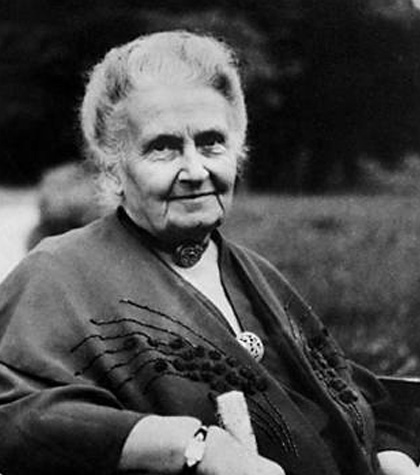Montessori means…
Life-long learners: Children are natural students and have what Dr. Montessori called “absorbent minds”: they want to learn and are equipped with an insatiable curiosity that allows them to do it well. A Montessori education works with those tendencies, not against them. The role of the Montessori teacher is not to rein in the student, but to facilitate learning by guiding and mentoring them in their own process of exploration. This organic approach to education ensures that the children never lose their passion for discovery and grow to become life-long learners.
Nurturing the whole child: The Montessori approach also aims to nurture the whole child, not just intellectually but also socially and emotionally. One of the ways this is accomplished is through multi-age classrooms in which the younger students benefit from the mentorship of their older peers, while the older students develop leadership abilities and a habit of respectful service.
Making the most of the early learning years: Most of a child’s brain development happens in the first six years of their life. In those critical early years, children go through a series of sensitive periods, during which they are especially receptive to learning particular skills such as language (from birth to age 6), numbers (from ages 4 to 5.5), and manners (from ages 2 to 6). The Montessori method is designed to make the most of these rich learning opportunities.
Child-centered approach: The Montessori classroom environment is also designed according to the method’s child-centered philosophy. The furniture and materials are all at a level and scale that makes them entirely accessible to children to facilitate hands-on learning. This accessibility also recognizes a child’s uniqueness, allowing them to take charge of their own learning by following their passions and working at their own pace.
Get in touch
If you’d like to learn more about why choosing Montessori is the best option for your child, click the link below and we can answer that question.
Find out more ▸
Founder
Maria Montessori
Maria Montessori was born on the 31st August 1870 in the town of Chiaravalle, Italy. Her father, Alessandro, was an accountant in the civil service, and her mother, Renilde Stoppani, was well educated and had a passion for reading.
The Montessori family moved to Rome in 1875 and the following year Maria was enrolled in the local state school. Breaking conventional barriers from the beginning of her education, Maria initially had aspirations to become an engineer.
When Maria graduated secondary school, she became determined to enter medical school and become a doctor. Despite her parents’ encouragement to enter teaching, Maria wanted to study the male dominated field of medicine. After initially being refused, with the endorsement of Pope Leo XIII, Maria was eventually given entry to the University of Rome in 1890, becoming one of the first women in medical school in Italy. Despite facing many obstacles due to her gender, Maria qualified as a doctor in July 1896.
Soon after her medical career began, Maria became involved in the Women’s Rights movement. She became known for her high levels of competency in treating patients, but also for the respect she showed to patients from all social classes. In 1897, Maria joined a research programme at the psychiatric clinic of the University of Rome, as a volunteer. This work initiated a deep interest in the needs of children with learning disabilities. In particular, the work of two early 19th century Frenchmen, Jean-Marc Itard, who had made his name working with the ‘wild boy of Aveyron’, and Edouard Séguin, his student. Maria was appointed as co-director of a new institution called the Orthophrenic School. In 1898 Maria gave birth to Mario, following her relationship with Giusseppe Montesano, her codirector at the school.
At the age of twenty-eight Maria began advocating her controversial theory that the lack of support for mentally and developmentally disabled children was the cause of their delinquency. The notion of social reform became a strong theme throughout Maria's life, whether it was for gender roles, or advocacy for children.
In 1901 Maria began her own studies of educational philosophy and anthropology, lecturing and teaching students. From 1904-1908 she was a lecturer at the Pedagogic School of the University of Rome. This period saw a rapid development of Rome, but the speculative nature of the market led to bankruptcies and ghetto districts. One such area was San Lorenzo, where its children were left to run amok at home as their parents worked. In an attempt to provide the children with activities during the day to fend of the destruction of property, Maria was offered the opportunity to introduce her materials and practice to 'normal' children. There, in 1907, she opened the first Casa dei Bambini (Children's House) bringing some of the educational materials she had developed at the Orthophrenic School.
Maria put many different activities and other materials into the children’s environment but kept only those that engaged them. What she came to realise was that children who were placed in an environment where activities were designed to support their natural development had the power to educate themselves. By 1909 Maria gave her first training course in her new approach to around 100 students. Her notes from this period provided the material for her first book published that same year in Italy, appearing in translation in the United States in 1912 as The Montessori Method, and later translated into 20 languages.
A period of great expansion in the Montessori approach now followed. Montessori societies, training programmes and schools sprang to life all over the world, and a period of travel with public speaking and lecturing occupied Maria, much of it in America, but also in the UK and throughout Europe.

